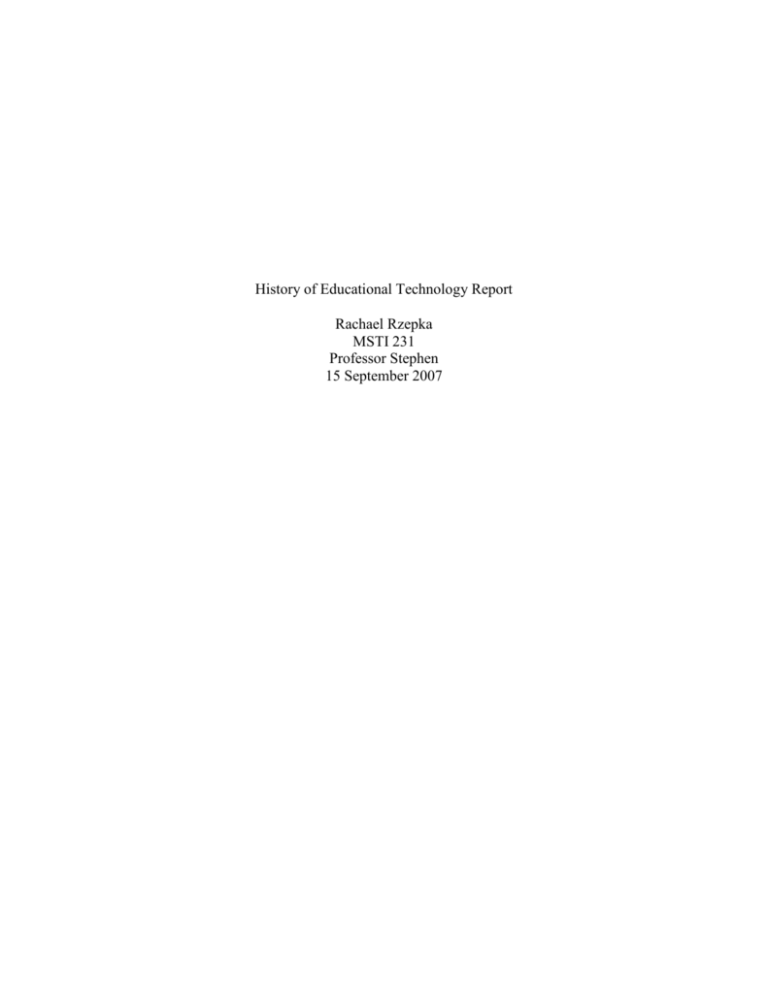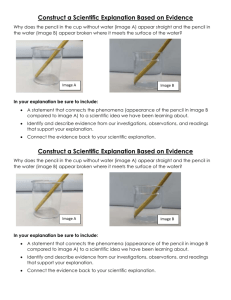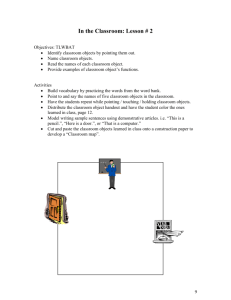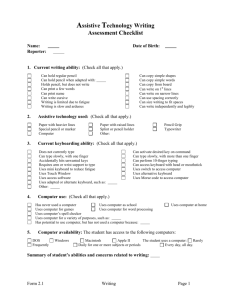History of Educational Technology Report
advertisement

History of Educational Technology Report Rachael Rzepka MSTI 231 Professor Stephen 15 September 2007 When thinking of Educational Technology many people think of computers. However, educational technology can go way back to when the pencil was created. It is strange to think in today’s modern age that a pencil can be considered technology. This is because today there have been so many technological advances with computers, ipods, and even cell phones. Computers have had the biggest impact of all on education, especially through the use of the internet. When looking at technology we can go as far back to the year 1453 when the first bible was printed (Bruce). Gutenberg’s printing press can be seen as one of the first and most fundamental parts of educational technology. Due to the printing press textbooks and other references, which are vital to a students experience in education, would not be mass produced at such a rapid speed. This would then impede how knowledge is passed on to today’s students. If all lessons had to be taught by word of mouth it would be extremely difficult to rely on that source. Approximately 100 years later in 1564, Graphite was discovered (Bruce). Graphite lead to the discovery of the pencil. As previously stated it is difficult to think of the pencil as a piece of technology because of how simple it really is. However, if you think back to the year 1564, the pencil was a way to communicate ideas and share them with the world. Without the pencil many stories and other various tools used in technology would not have been produced. In today’s age we have computer science. This is a huge progression from the pencil and the printing press. Moving nearly 400 years into the future from the pencil was the first visual instruction offered for credit at the University of Minnesota (Betrus). This class was offered in 1918 by Albert M. Field (Betrus). Two years later, in 1920 a survey was conducted by Anna V. Dorris in which she “analyzed survey results from 30 normal schools and 37 universities regarding their provisions for teaching visual instruction” (Betrus). She found that schools considered normal taught these courses over the summer as opposed to during the conventional school year (fall and spring). In addition she found that the content taught in the courses was not always consistent, showing that there was no direct curriculum or set guide for these classes (Betrus). Nearly thirty years later there was, “a rapid increase in the number of institutions offering an introductory course in audiovisual instruction” (Betrus). The more technology that became available the more it was discussed and implemented into schools. During this time period the Soviet Union launched the first satellite (Betrus). This historic event led to “the United States Congress passing the National Defense Education Act” (Betrus). With this being passed it “proved to have a significant influence on the introductory technology course” (Betrus). Only another thirty years later and the “information age” was on the rise. During the 1980s and 1990s, “there was an increase in digital technology innovations” (Betrus). It was during this time period in which computers were being integrated into classrooms. It was during the 1980s that “school systems began to invest heavily in microcomputers for classroom use” (Betrus). The number of computers in schools grew rapidly and “by 1988, the estimate was as high as three million” (Betrus). As the years have gone on we have experience many changes in technology. In today’s age (the year 2007), we have seen computers become smaller, and forms of communication change. Today we have wireless internet which allows us to use laptops and computers without having any cords. We are able to access so much information through the use of the internet. It is exciting that education has moved from oral tradition to printed copies of oral tradition to a tool which allowed people to write to a tool that is now used to communicate. The computer today has become a piece of technology that is used in everyday life which can be seen as an essential tool in education. Works Cited Betrus, Anthony K. "Historical Evolution of Instructional Technology in Teacher Education Programs." Tech Trends 46 (2002): 18-23. ProQuest. Lavery Library, Rochester. 9 Sept. 2007. Bruce, Bertram C. "Constructing a Once-and-Future History of Learning Technologies." Journal of Adolescent and Adult Literature 44 (2001): 730-737. ProQuest. Lavery Library, Rochester. 9 Sept. 2007.








